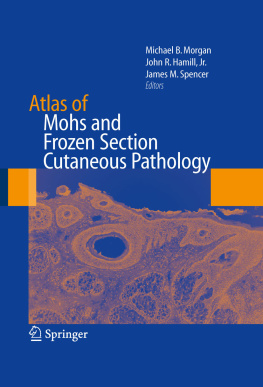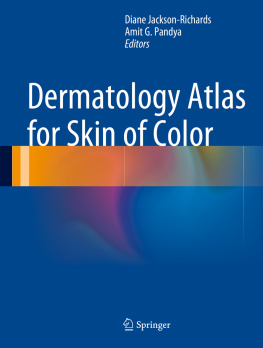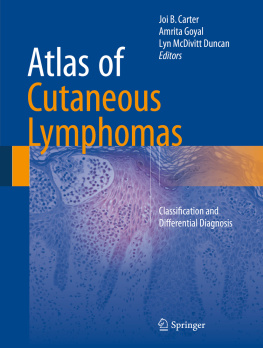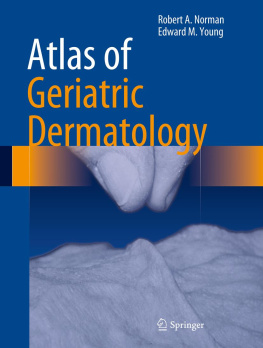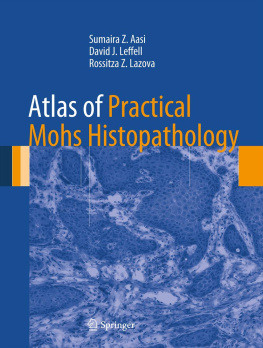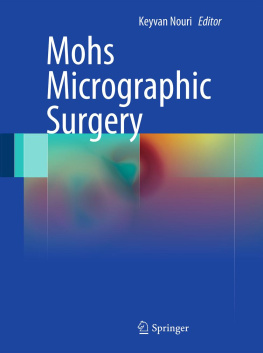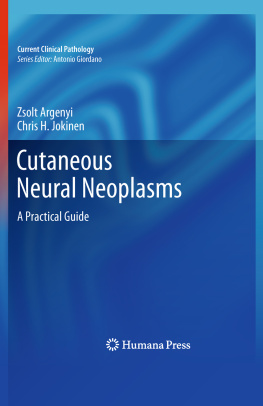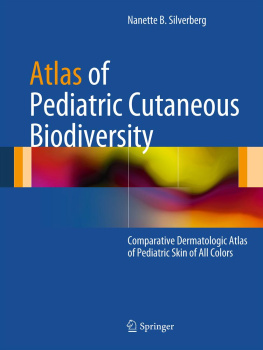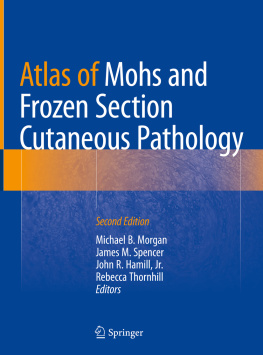Michael Morgan , John R. Hamill and James M. Spencer (eds.) Atlas of Mohs and Frozen Section Cutaneous Pathology 10.1007/978-0-387-84800-6_1 Springer Science+Business Media, LLC 2010
1. Mohs and Frozen Section Overview
Abstract
The evaluation of frozen section prepared tissues derived from the skin constitutes a burgeoning area of hospital- and outpatient-based pathology practice. Frozen section cutaneous pathology encompasses a diverse array of techniques for preparing the skin specimen and incorporates a variety of diagnostic methodologies. This book will principally address the histologic interpretation of the various cutaneous neoplasms encountered with the Mohs micrographic frozen method and traditional fresh-frozen pathology. Unusual diagnostic applications of frozen sections such as frozen section immunopathology, special techniques including the adjudication of the scalded skin syndrome with toxic epidermal necrolysis and unconventional topics such as perineural pathology and quality assurance with technique trouble-shooting will also be covered. Frozen section intra-operative consultation traditionally involves the evaluation of neoplastic tissues for diagnosis confirmation, application of special techniques and/or the evaluation of tissue margins.
The evaluation of frozen section prepared tissues derived from the skin constitutes a burgeoning area of hospital- and outpatient-based pathology practice. Frozen section cutaneous pathology encompasses a diverse array of techniques for preparing the skin specimen and incorporates a variety of diagnostic methodologies. This book will principally address the histologic interpretation of the various cutaneous neoplasms encountered with the Mohs micrographic frozen method and traditional fresh-frozen pathology. Unusual diagnostic applications of frozen sections such as frozen section immunopathology and unconventional topics such as perineural pathology and quality assurance with technique trouble-shooting will also be covered.
Understanding that the vast majority of cutaneous neoplasms can be successfully removed in the outpatient setting without the aid of frozen section examination or treated without examination of removed tissues (e.g., photodynamic therapy, topical immune response agents (Imiquimod) or palliative measures (e.g., radiotherapy or intralesional chemotherapy), the principal discussion will revolve around the frozen-section determination of both the more common non-melanoma skin cancers, unusual malignancies of the skin (e.g., merkel cell carcinoma), simulants of cutaneous cancer, as well as discuss the important differential diagnoses and pitfalls that arise in the preparation and interpretation of these specimens. The first chapters will entail an in-depth examination of the normal epithelium, dermis and subcutaneous fat. Important age-related and/or benign degenerative changes such as solar elastosis will be discussed. Each of the topics to be considered will be preceded by a brief synopsis or prcis of the entity entailing its epidemiologic, definitional, pathogenic, clinical and pathologic features. This will be followed by a traditional text document pertaining to the prcis and finally, high-quality color photomicrographs taken at low, medium and high powers of magnification. The photomicrographs will be prepared from frozen section material and will be presented in a contrasting format with the most important differential diagnosis presented adjacent to the topic headings. The margins of each photo will contain the most important diagnostic points useful in distinguishing the entity. Each chapter will be followed by a concise bibliography.
Indications for Frozen Sections of the Skin
The principal application of frozen section consultation is to assure the complete removal of a non-melanoma skin carcinoma (NMSC). The goal is not only to completely remove the abnormal tissue but to assure that as minimal amount of normal tissue is removed for cosmetic or functional purposes. The functional concerns entail preservation of as much of the normal anatomy as possible in highly-functional tissues such as the peri-ocular adnexae, eyelids and around the mouth or nares. In the removal of larger specimens that require complicated closures with the aid of tissue flaps or grafts, assurance of negative tumor margins is essential. Frozen section examination is also commonly employed in circumstances where the tumor has recurred or excessive post-operative scarring or radiotherapy complicates the clinical determination of tumor borders. The final indications involve the determination of various cutaneous dermatoses such as toxic epidermal necrolysis versus the staphylococcal scalded skin syndrome. As both conditions show considerable clinical overlap, portend a grave prognosis and involve vastly different modes of therapy, rapid frozen section determination between these entities can become necessary.
Histologic Prerequisites to Frozen Section Evaluation
Several practices should be adopted prior to frozen section examination of the skin. One of the most important exercises to routinely employ is the pre-procedural review of permanent tissue sections obtained by prior biopsy of the lesion scheduled to be removed. In some instances, the original interpretation rendered is in error or may involve histologic subtleties usefully remembered in the interpretation of the subsequent specimen. Familiarity with the normal histology and its key variations is assumed. Dermatopathology text review, literature search and/or web image review can also be resorted to with planned removal of unusual entities. Among the more varied pathologic nuances potentially encountered that pose considerable challenge during frozen section interpretation are morpheaform basal cell carcinoma, microcystic adnexal carcinoma, dermatofibrosarcoma protuberans and simulants of malignancy such as psuedoepitheliomatous hyperplasia, basaloid follicular hamartoma and dense/obscuring inflammatory infiltrates, which will be subsequently discussed.
Handling of the Specimen/Frozen Technique
Adequate preparation of the glass slides to be examined and the tissue chucks to be utilized are prerequisite to the handling of the skin specimen. Glass slides should be prepared with adequate patient identification, employing alcohol fast labeling, typically with leaded pencil marking. If possible, a technique employing a redundant patient identification mechanism, i.e., patient name and surgical or operative number should be considered. Cryostat tissue section chucks should be mounted with OCT embedding compound prior to tissue receipt. Once frozen, the OCT should be planned to ensure a flattened surface. This can be accomplished by simply rubbing the surface of the frozen chucks over a clean, firm, smooth surface. The undersurface of the chucks may be labeled with a colored wax pencil or pencil-lead.
Upon receipt of the specimen, assurance should be made as to the origin and correct identification of the specimen, ascertained by matching the specimen jar or sample container with the requisition form. The time of specimen receipt should also be recorded for quality assurance and turn-around-time determinations. Special attention should be given to the size, shape and particularly identifying marks, contrasting inks or suture ties orientating the specimen. The anatomic location, dimensions (three planes), the number of visible lesions, their dimension, surface attributes (e.g., keratotic, ulcerated, etc.), color of the lesion and orientating features should also be recorded. Anatomic orientation should be maintained if possible in the preparation of the specimen. Orientation may be arbitrarily assigned to clock positions (e.g., 12 oclock) representing either an anatomically cephalad or superior orientation or corresponding to a tip of an ellipse and recorded with the aid of a diagram. Generally, skin specimens are configured in an elliptical or oval silhouette as to allow cosmetically-acceptable closure of the wound (Figs. ). Rarely, triangular (often from the ear or lip) or oblong specimens will be received pending anatomic considerations or the extent of tumor extension. Typically, oval or elliptical specimens measuring less than 1.0 cm in length can be sectioned and submitted entirely in a single cassette. Multiple blocks may need to be prepared for larger specimens.

